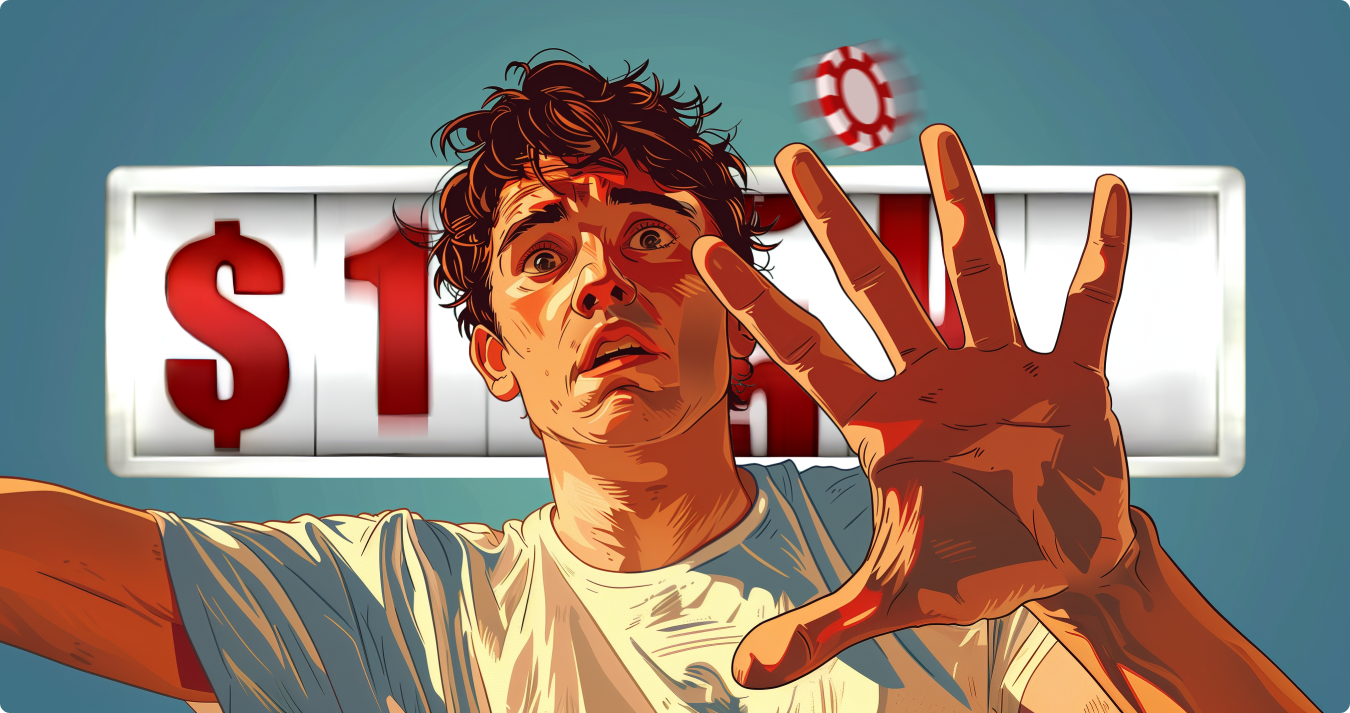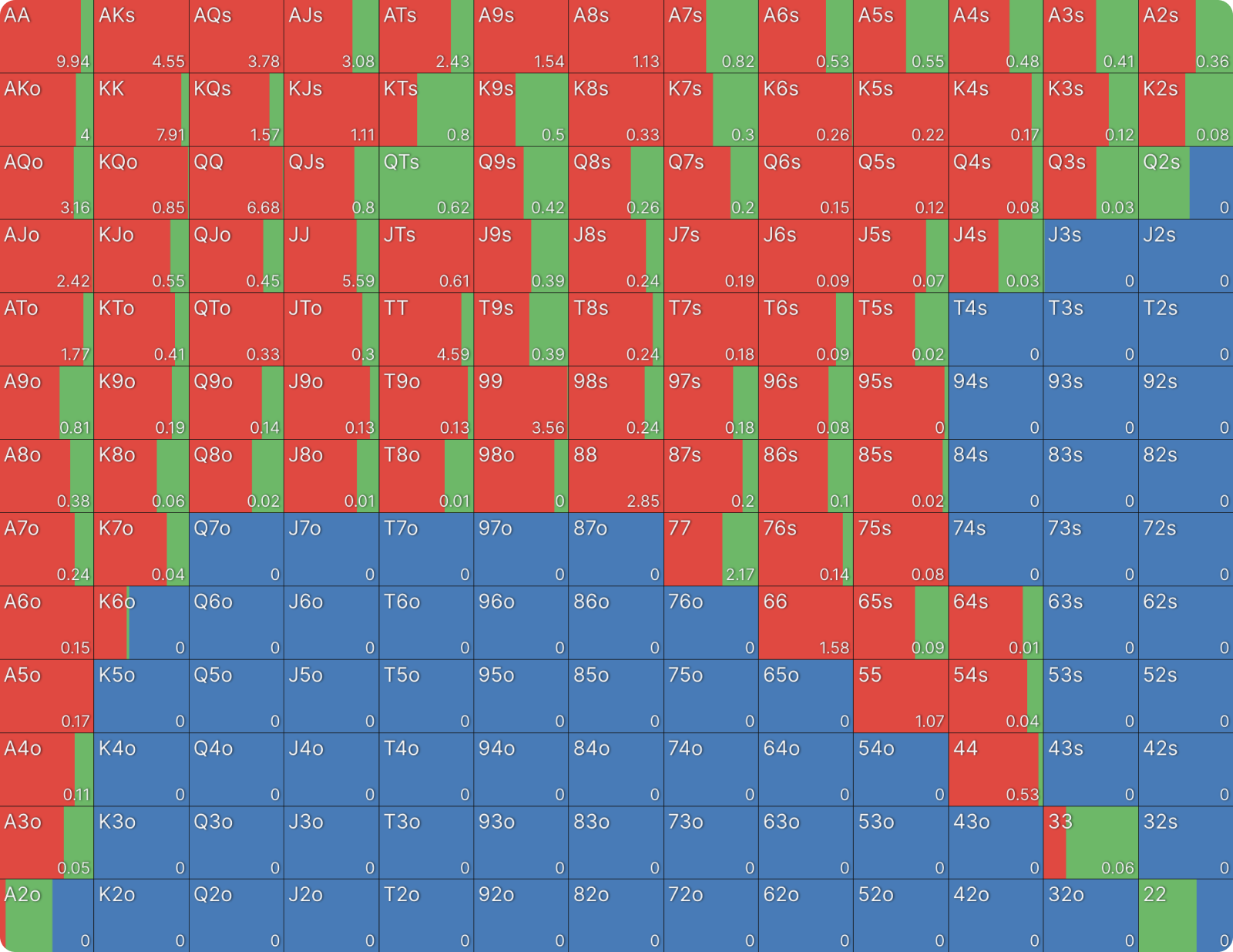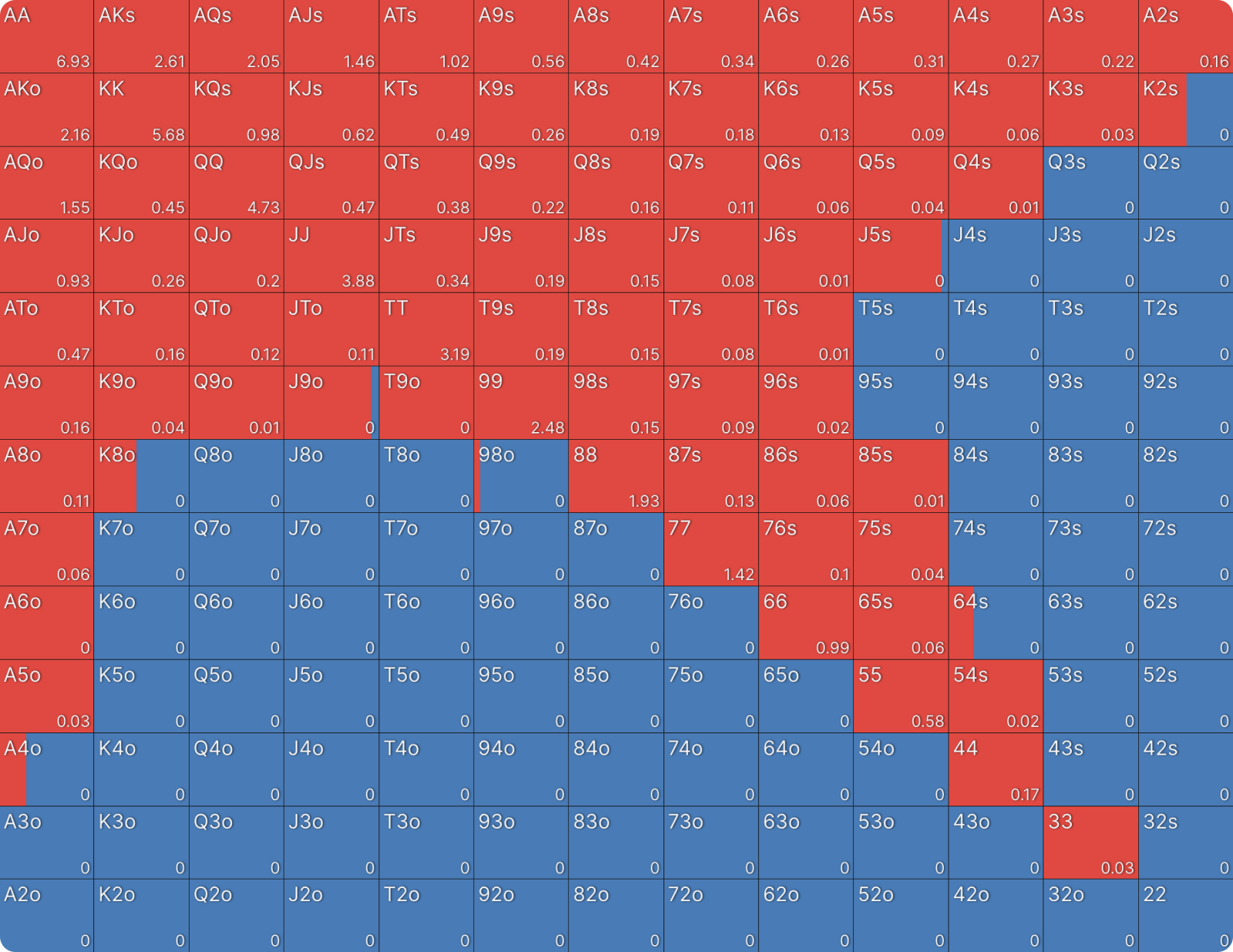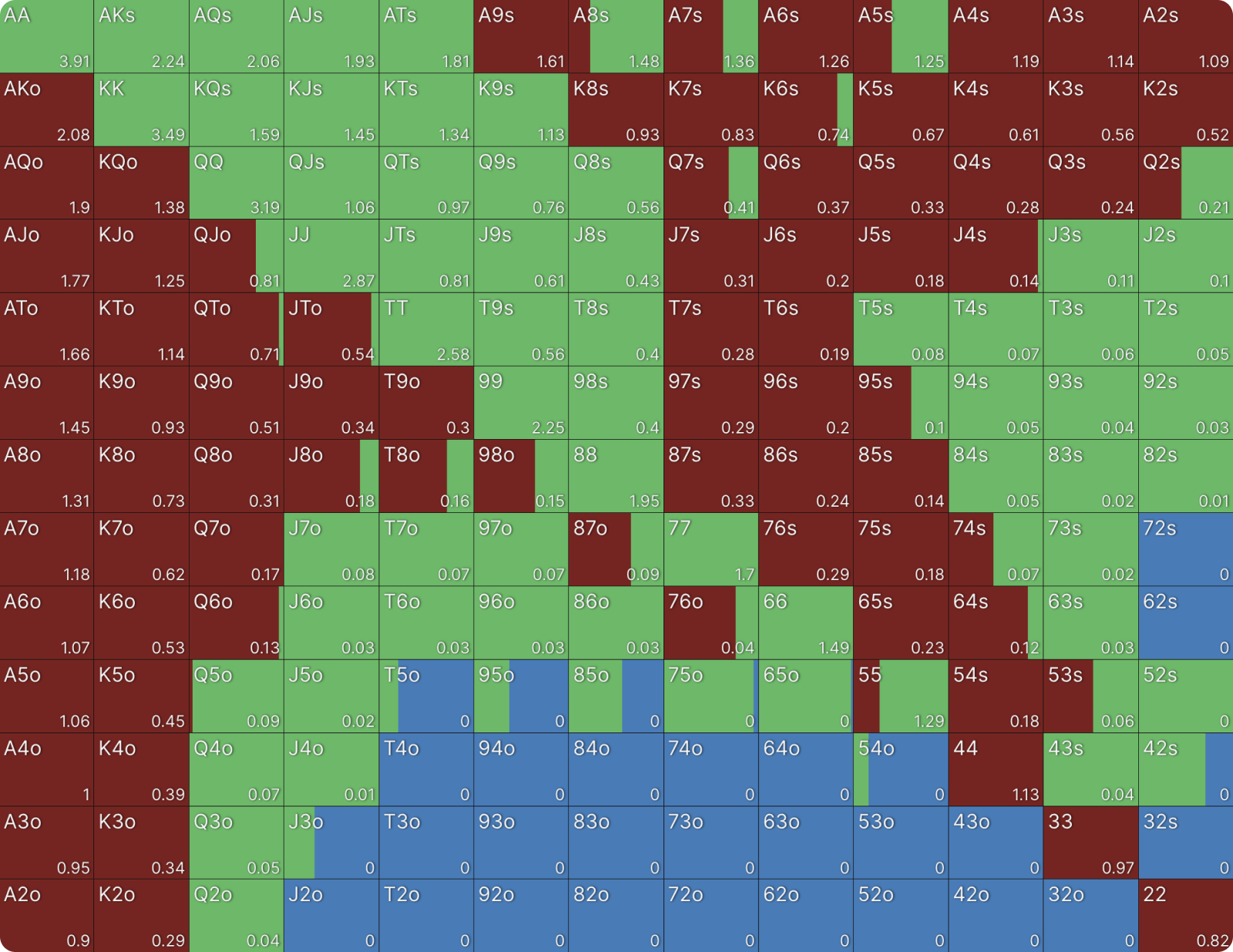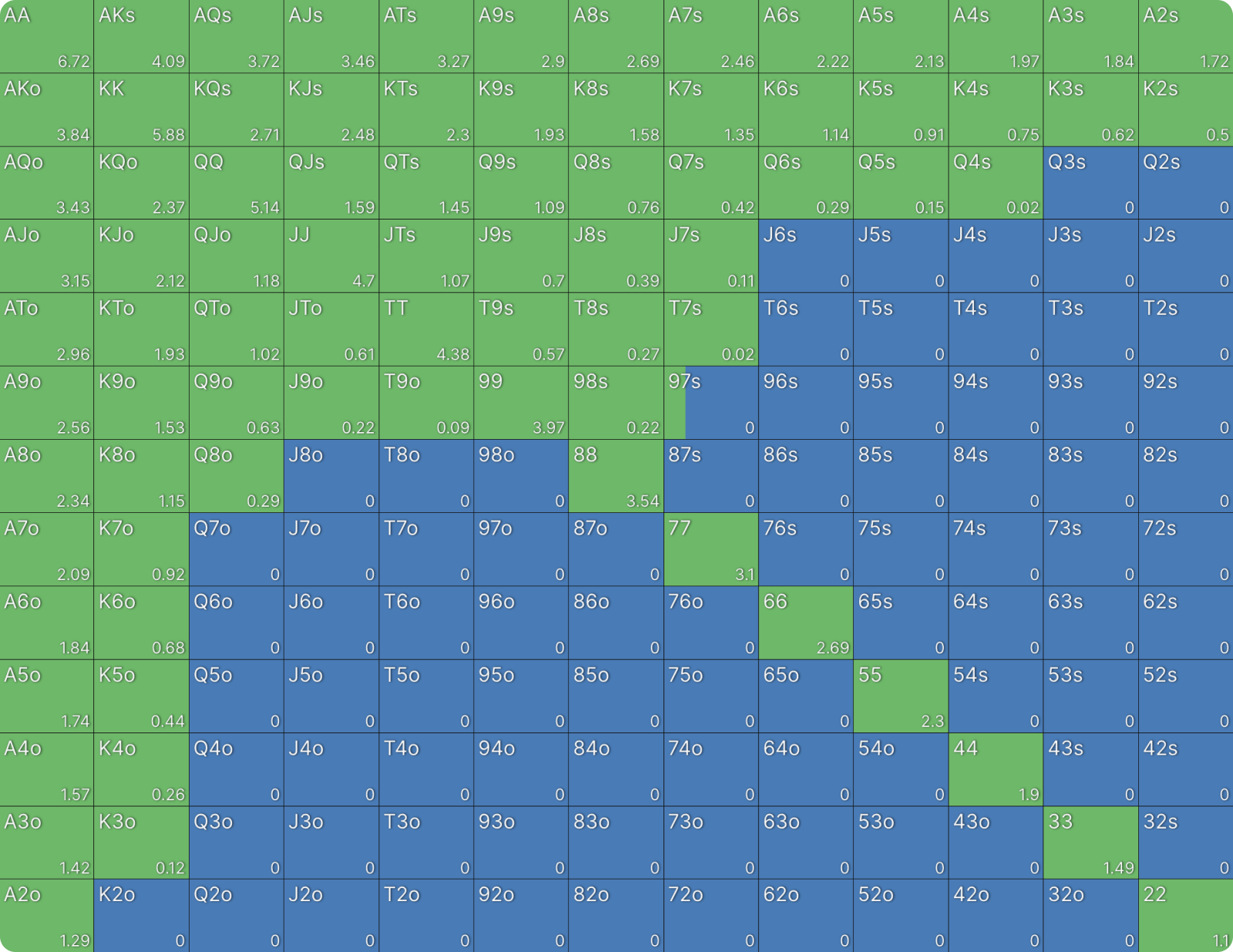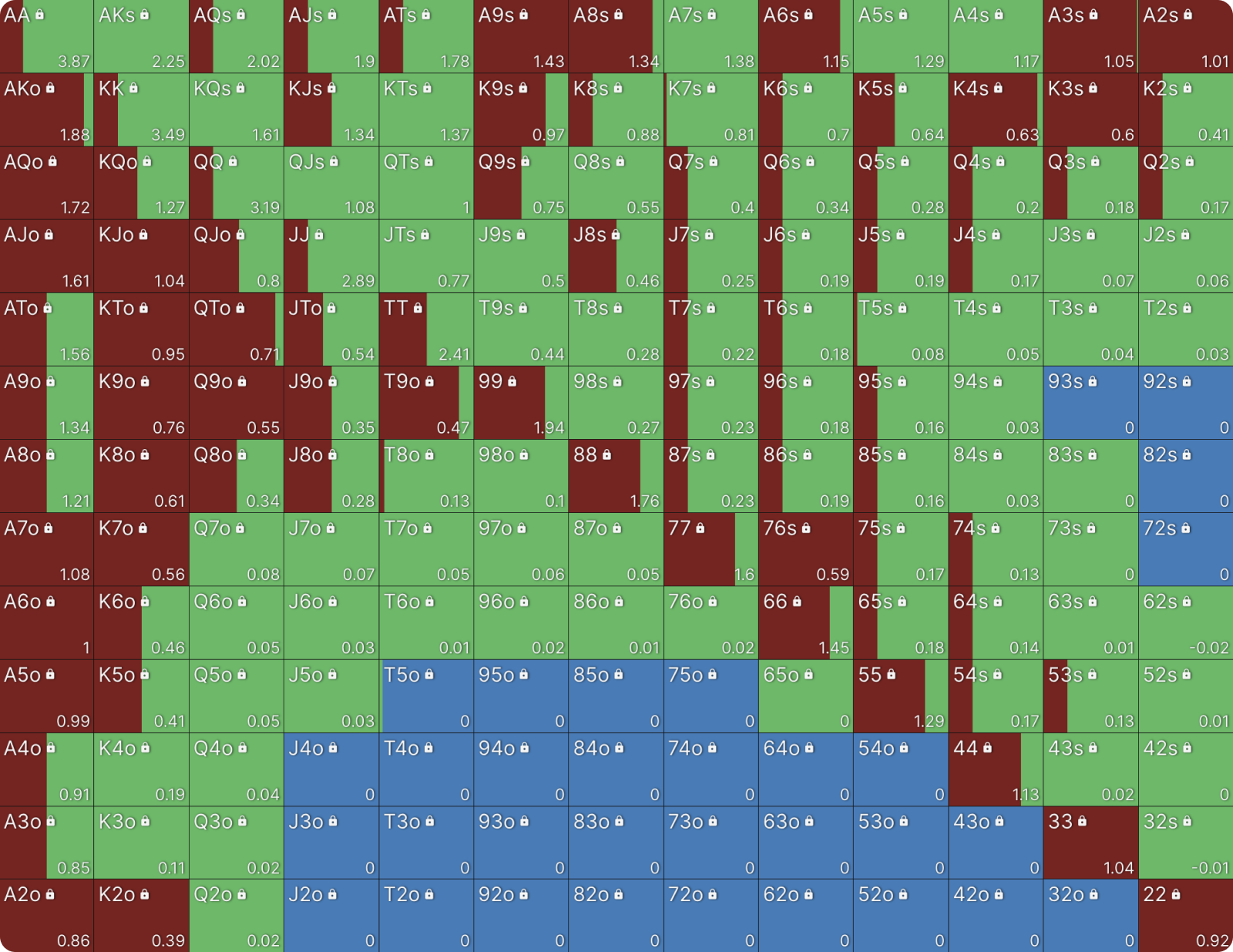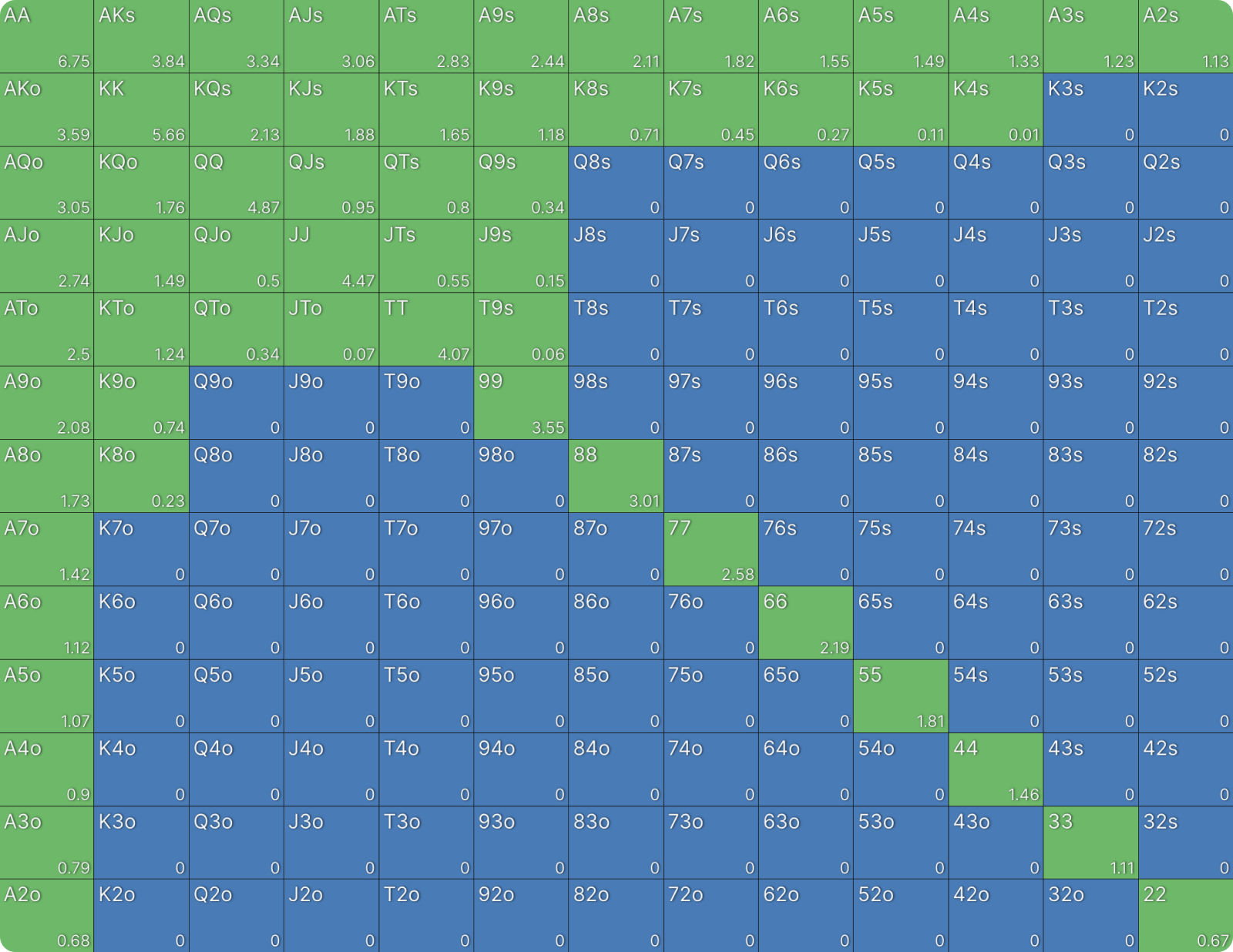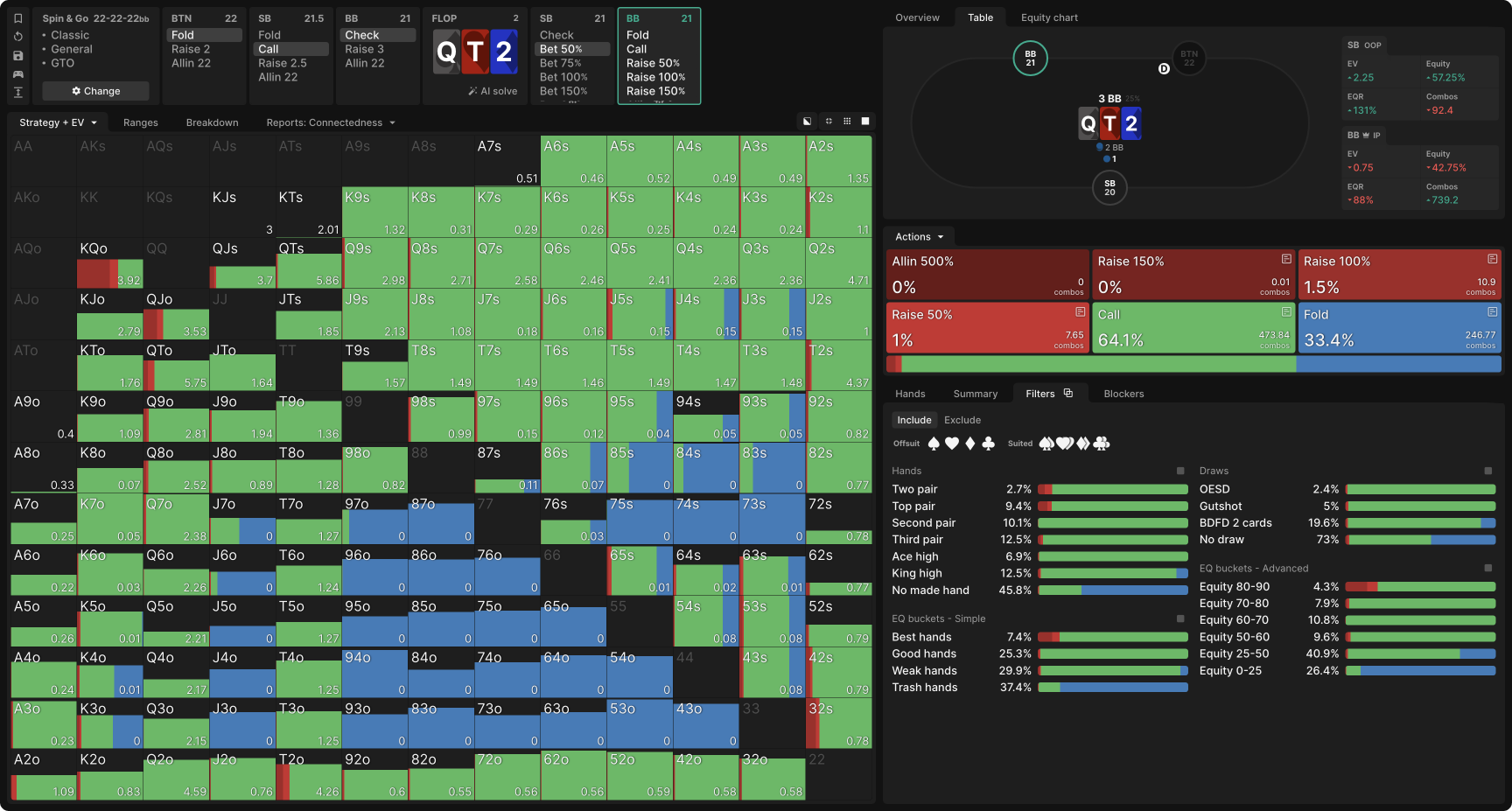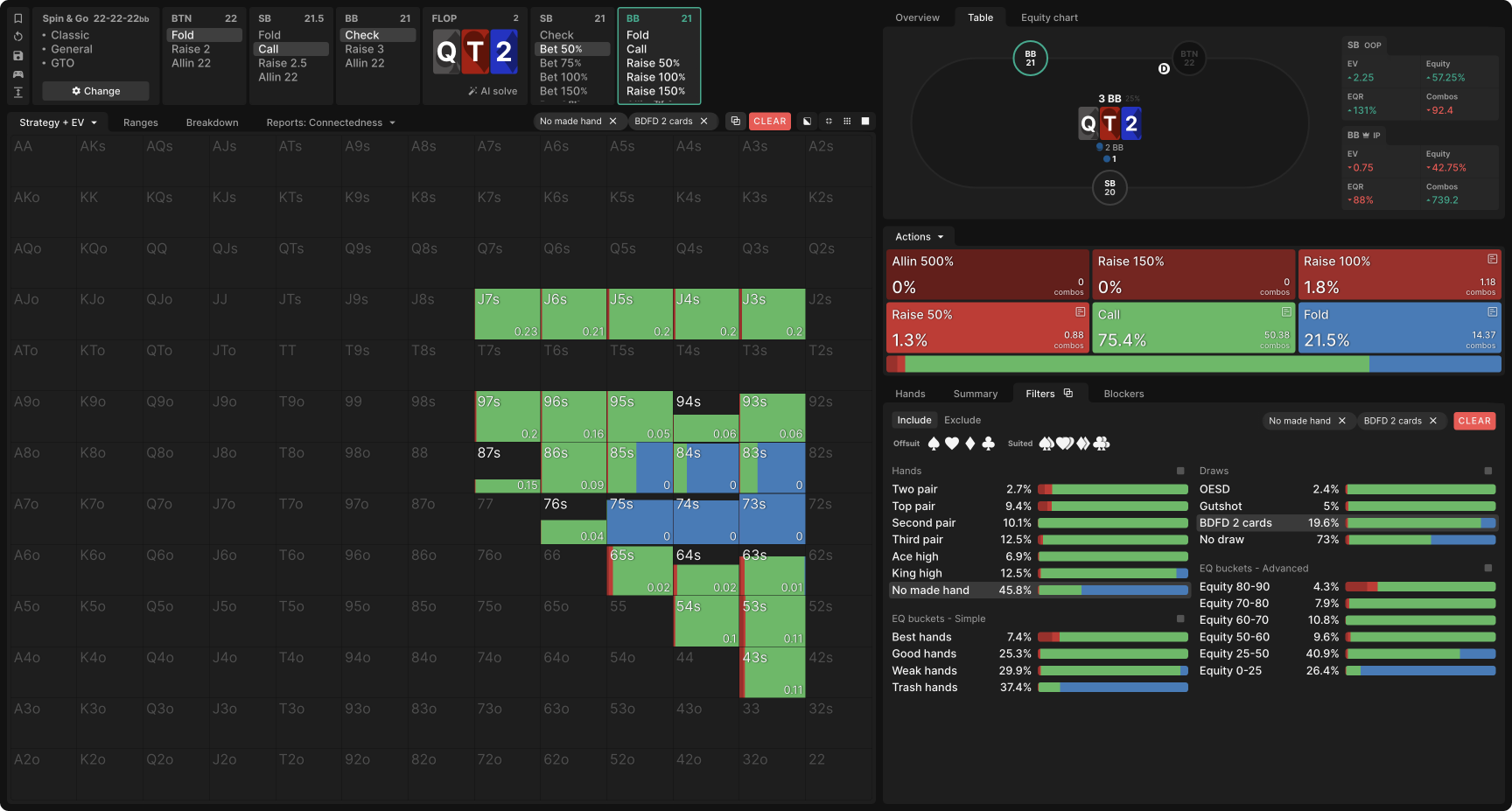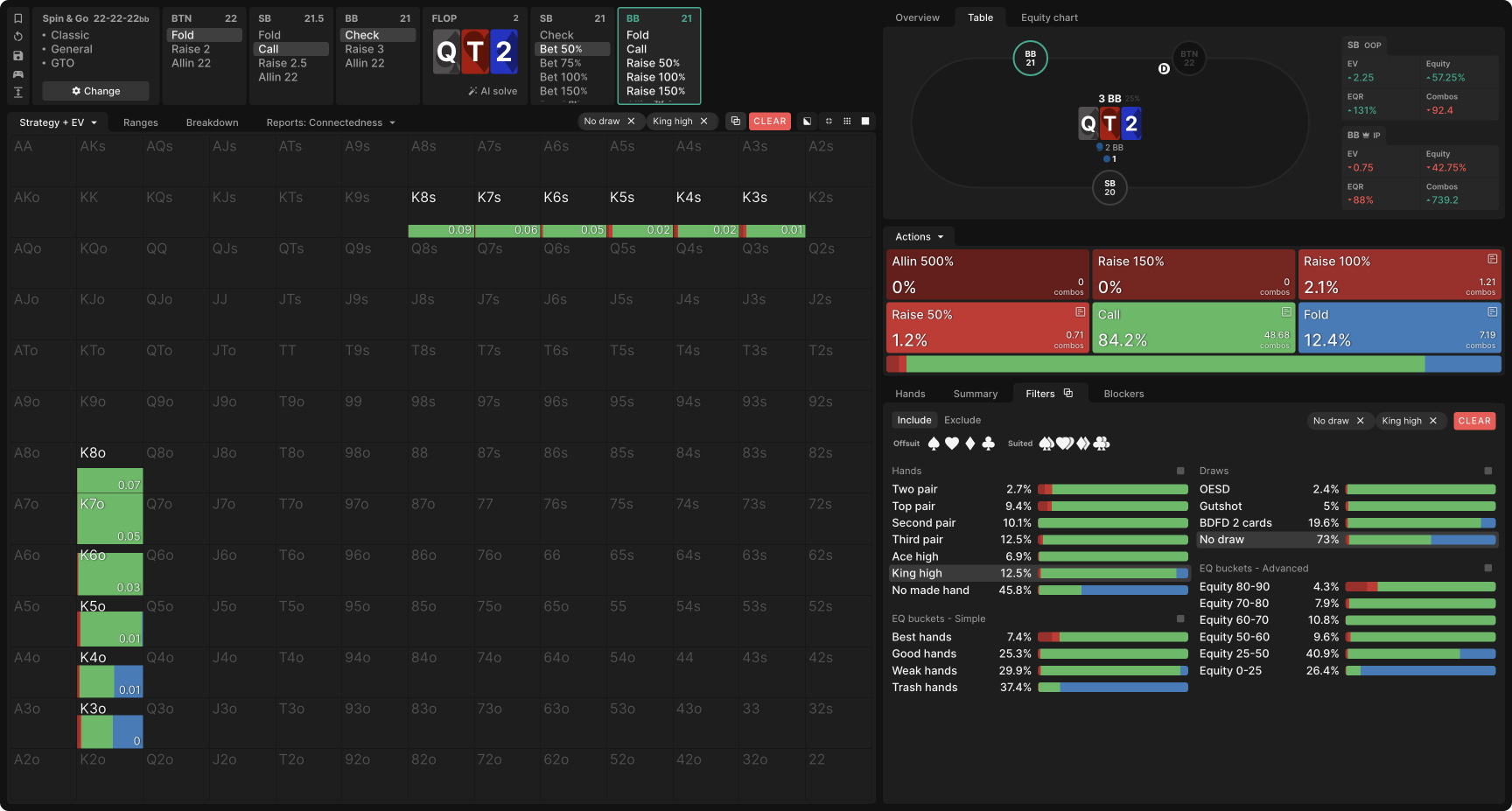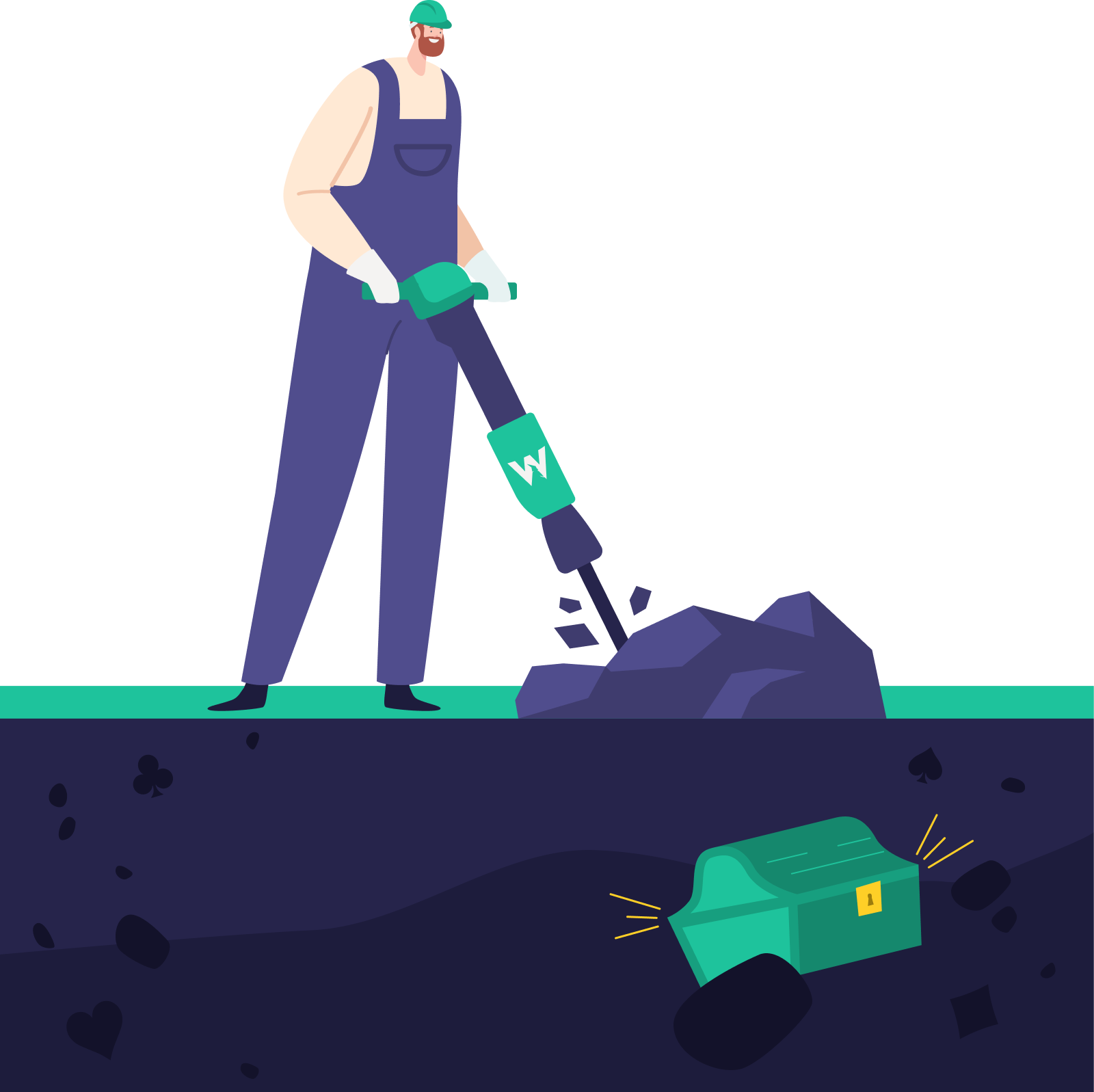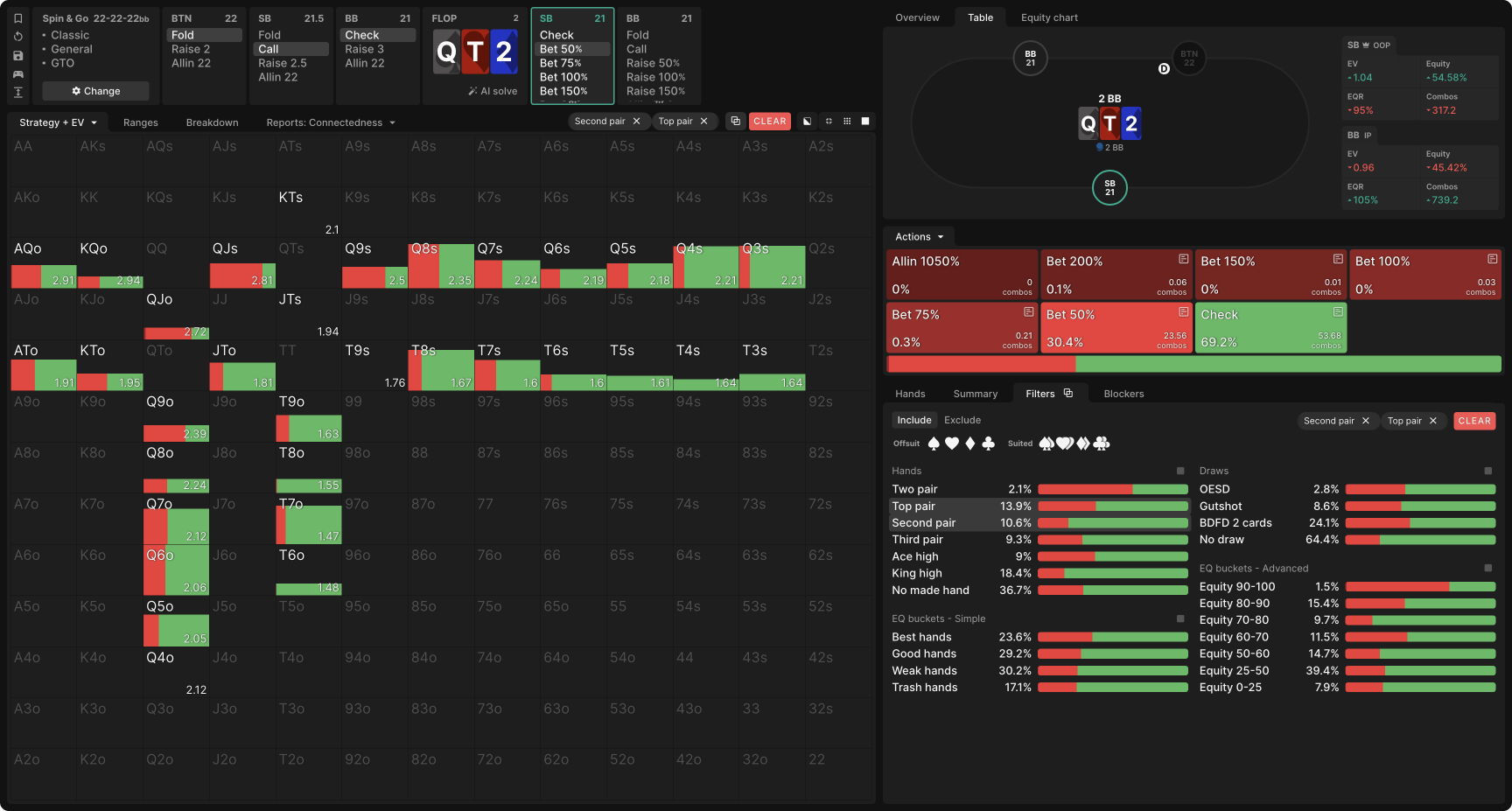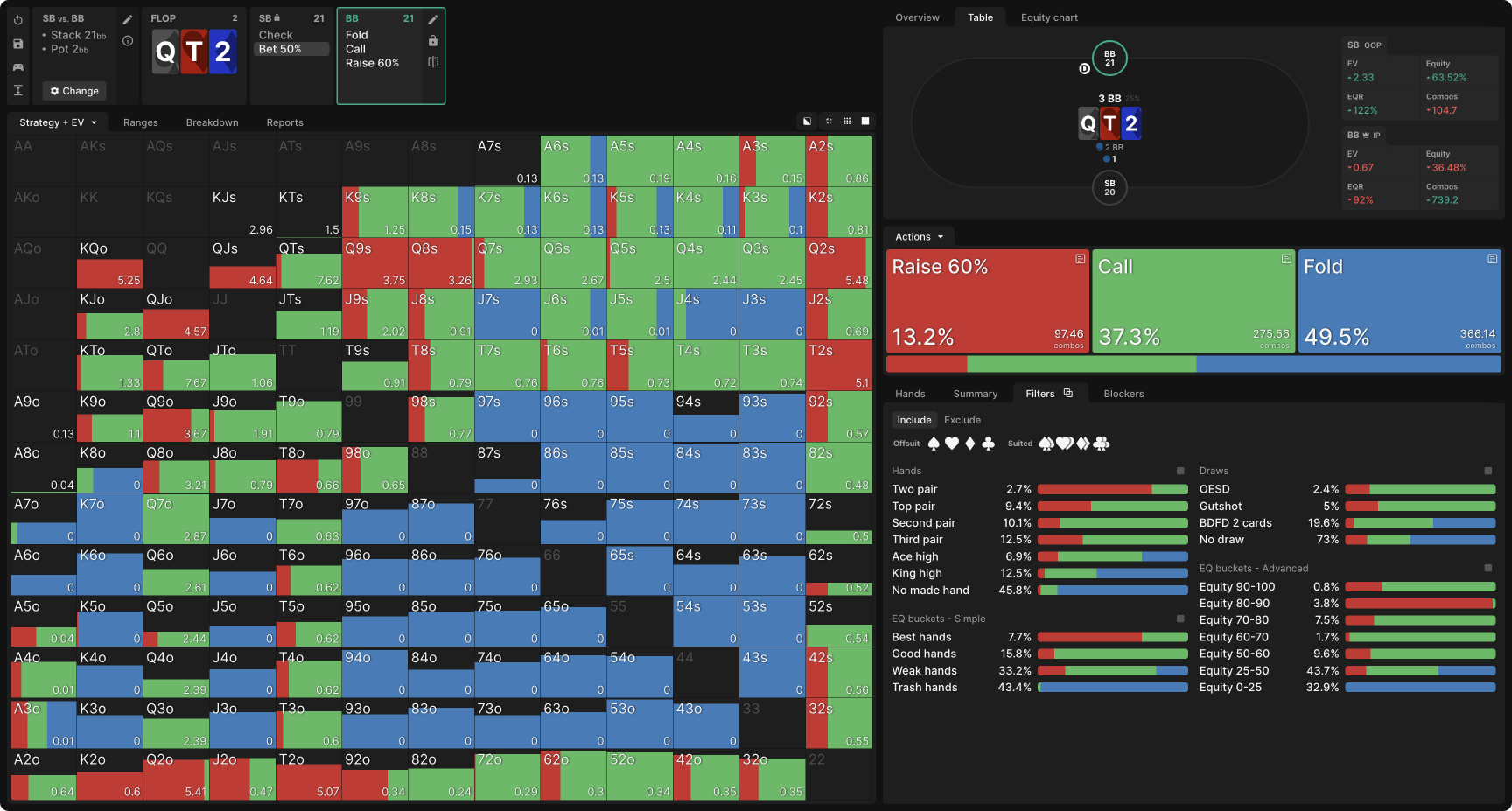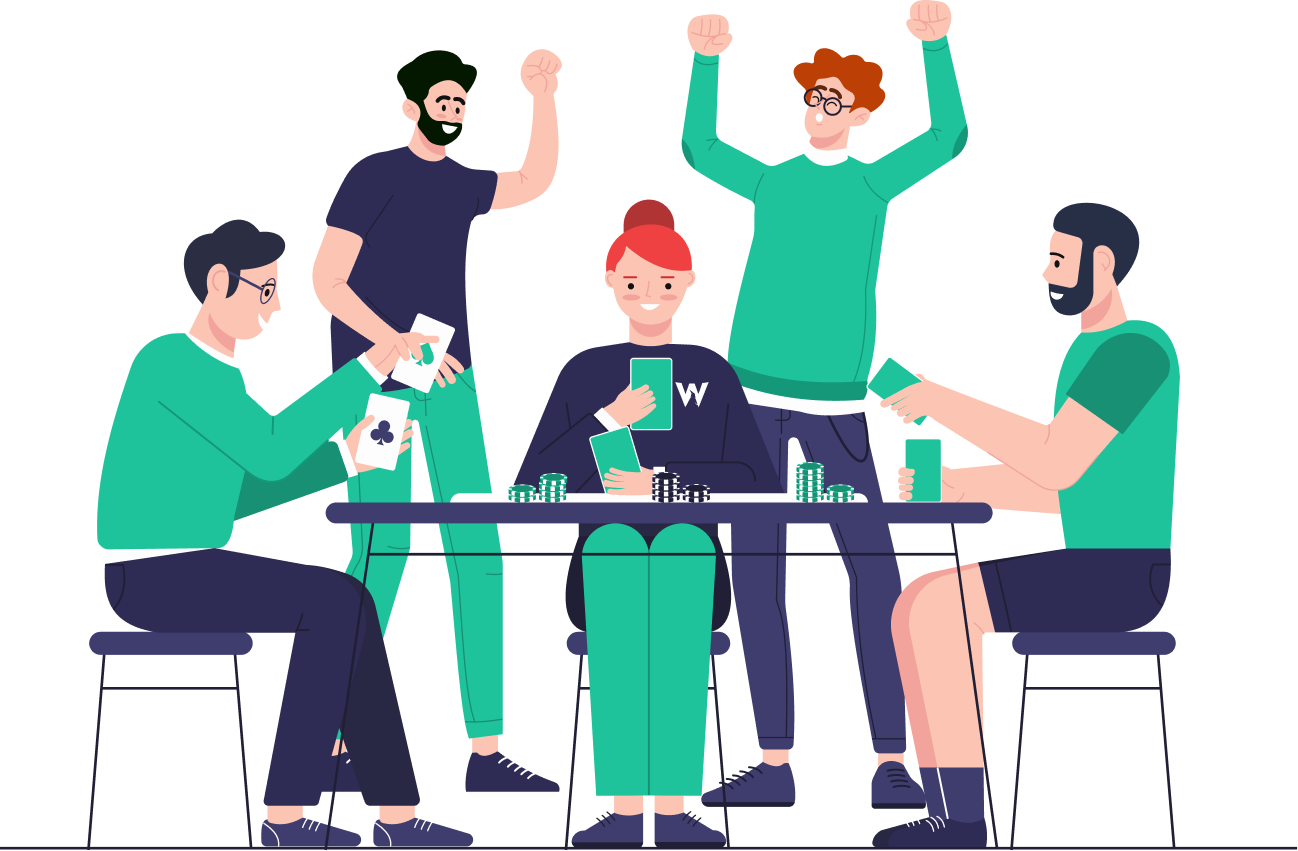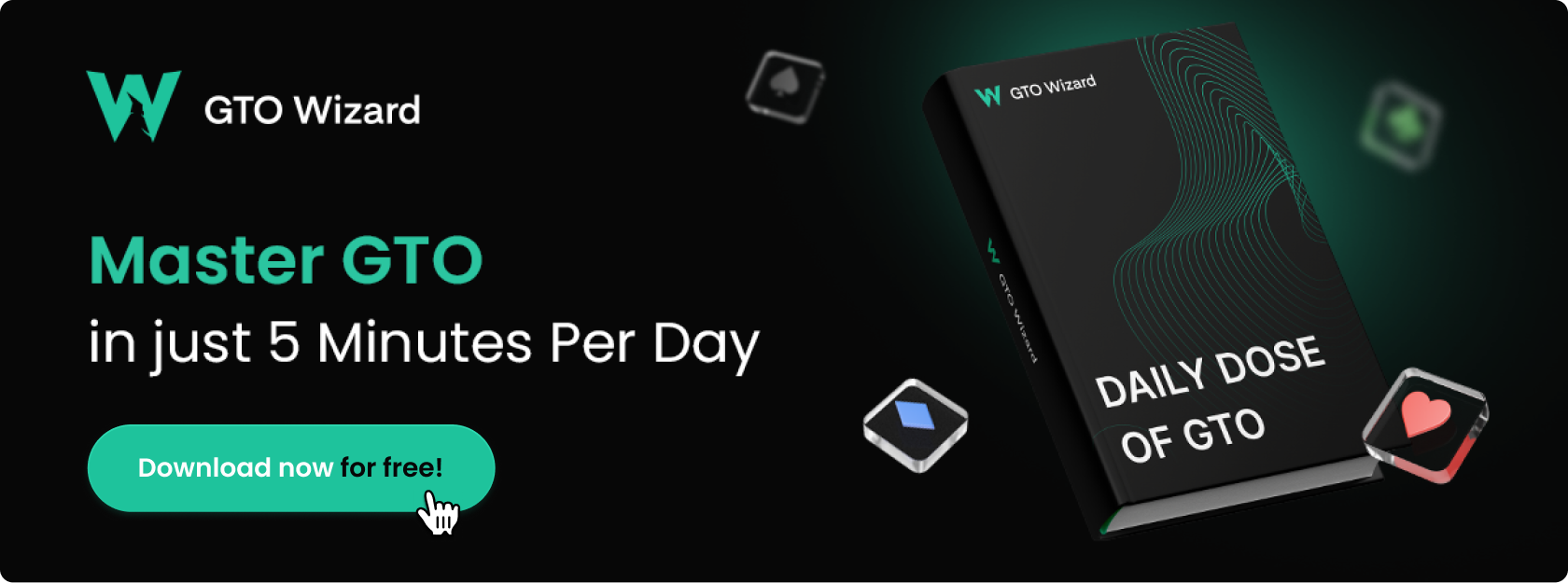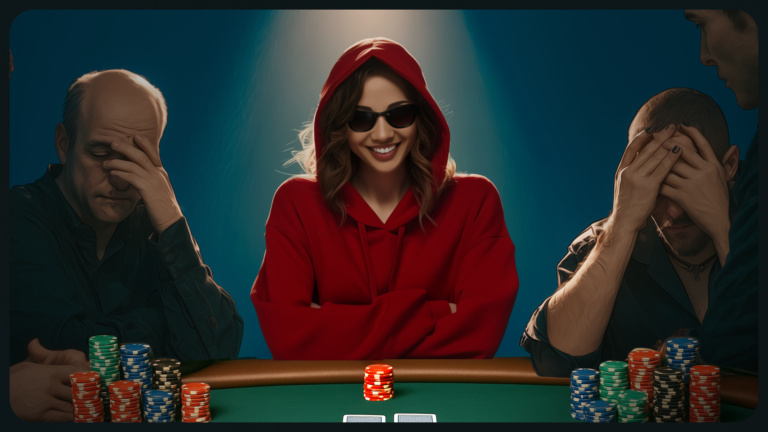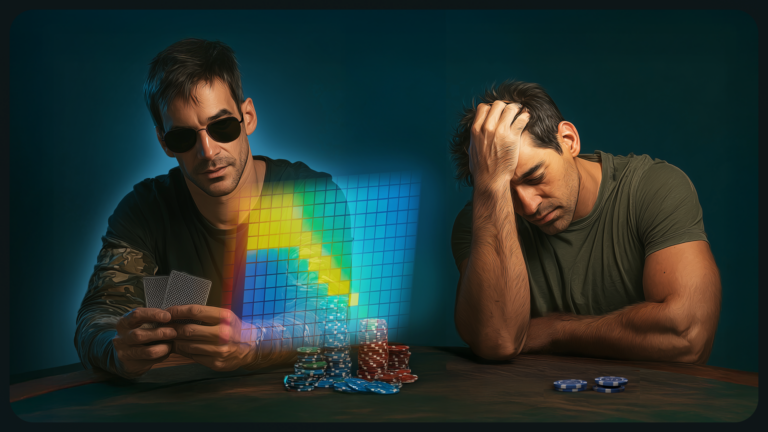Top 5 Mistakes in Spin & Gos
As a Spin and Go poker coach, I regularly encounter common mistakes that players make, affecting their performance and profitability. It’s surprising to see that not just beginners but also advanced players fall into these traps, which can cost them a lot over time. Today, I’m eager to share the top 5 mistakes to avoid when playing the Spin and GoSpin and Go
3-player Sit and Go where only the range of potential prizes is known beforehand but the actual prize is randomized with a ‘spin’ at the start of the game. format.
1) Playing Too Loose From the Button
This mistake is particularly prevalent among players transitioning from Tournaments to Spin & Gos. In that format, a playstyle involving around 48% VPIPVPIP
An online poker acronym which stands for ‘Voluntarily Put In Pot’, a statistic that measures the frequency with which a player voluntarily puts money into the pot preflop. with limps from the BTN is common at a stack depth of 25bb.
However, Spin & Gos require a tighter approach; playing only a 38.5% VPIP without limps. So, why do we play less hands in Spin & Gos? The answer involves the structure of antes; MTTs often include an extra big blind in the pot preflop, incentivizing more aggressive play. Additionally, the odds for limping on the Button in MTTs are more favorable.
Spin & Gos require a tighter approach because of the less favorable pot odds (no antes).
As a result, many players end up raising too many hands that are simply -EV, negatively impacting their win rate over time. Preflop mistakes are particularly costly due to their frequency. Even minor EV mistakes, when made consistently, can add up quickly to significant losses over time.
2) Making Nash/GTO Calls When Facing an All-In From Recreational Players
So, when should we call with GTO ranges when facing an all-in? Exactly when our opponent is pushing GTO ranges. Let’s delve into what these ranges look like at 8bb short in a heads up scenario:
On the left, we see the GTO strategy for the SB. It showcases a polarized limping strategy, incorporating the strongest hands with solid postflop playability alongside the weaker part of our range. The hands falling in between are going all-in. On the right, you can view BB’s optimal response to this all-in range, including hands as weak as T9o, T7s, and Q4s.
While many regs will shove GTO ranges preflop, this often isn’t the case for most recreational players. So, how do we adjust our call range against recreational players? A brilliant tool for this is the heads up preflop AI solver. It’s time for some preflop nodelocking!
The average recreational player across various platforms and stakes tends to shove tighter than GTO, with the occasional random spazz. I’ve attempted to simulate a tighter shoving range on the left side. Remember, we don’t need to nail this perfectly. Our goal is to uncover heuristics that enable us to make better in-game decisions. On the right side, you see our adjusted response. We need to tighten up significantly against that range.
But, we’re not finished just yet. Another critical factor is our future EV. Even with just 8bb, we still have an edge over most recreational players. Particularly against tight and passive opponents, it’s wise to avoid calling off with marginal hands, as our win rate in future hands tends to be higher.
However, a word of caution: not every recreational player fits the same mold! Against very aggressive opponents, we might need to broaden our calling range. My advice would be to experiment and develop a sense of the range you should call with against different types of players.
3) Folding Too Much to C-Bets From Regulars Blind vs Blind
This is a common mistake I see, even among quite experienced players. Let’s examine an example to demonstrate the kinds of hands that usually get folded, though they should be calls (or raises) in a GTO context. Assume a QT2 rainbow flop, 22bb deep, BB vs SB, in a limped pot. Below, you’ll see the overall defending range against a 1bb (50% pot) c-bet.
The next two pictures show the areas where players usually tend to under-defend. Each picture has an active filter.
- No made hand and 2-card BDFD (backdoor flush draw)
- King-high and no draw
4) Calling Too Many C-Bets From Recreationals Blind vs Blind
Same situation as before, but now we are facing a different opponent: a recreational player in the SB. Across most pools, stakes, and poker sites, the average recreational tends to c-bet with a tighter, more value-heavy, straightforward range. Their c-bet frequency tends to be on the lower side but carries a higher value to bluff ratio than GTO. Let’s first look at the value part of the GTO c-bet range. You will see that we should play a quite defensive strategy, checking the majority of our top pairs and middle pairs.
Let’s nodelock this situation on the flop with recreational tendencies in mind. Applying the same filters as before, you’ll now notice that all of these hands become very clear folds. Even most Ace-x hands without an additional draw are now folds.
Overall, BB’s folding range has increased significantly from 33% to 50%. For me personally, calling too many hands against recreational players was one of my most persistent leaks because folding so many hands felt very unnatural.
5) Studying All by Yourself
This mistake cost me the most money in my poker career. For the first 5-6 years, I studied all on my own. I watched coaching videos and worked with many tools (solvers weren’t even invented back then). However, my development was very slow. Six years later, I was still playing low stakes, making a couple of hundred bucks as a side hustle. It’s not bad for a young student, but there’s so much more potential.
It is no coincidence that most successful players at mid and high stakes have a core group with whom they study, create concepts, try things out, etc. I’m not saying that it’s impossible to be successful on your own, but I truly believe it’s much harder and will take more time, which, in the end, will be quite expensive.
I recently watched a YouTube video about the rise of the most successful YouTuber, Mr. Beast. When he had around 10k subscribers, he sought other YouTubers to collaborate with. He found 5 other small YouTubers, and they started working together.
For 1000 days, they met every day to collaborate. They learned from each other’s mistakes and implemented and tried out new ideas. This way, they all multiplied their learning curves. After that period, all 5 of them had over 1 million subscribers on YouTube. We should learn from this.
But where can you find like-minded people to study with? Well, you’re already there. The GTO Wizard Discord group is an amazing place. You can post spots, ask around for study partners, and more. You can also check out my Spin and Go community, Team Bas Poker. Every motivated player who wants to improve their skills is more than welcome.
Conclusion
Embarking on a poker journey can be a challenging yet rewarding endeavor. As we’ve explored the top mistakes to avoid in Spin and Gos, it becomes clear that continuous learning and adaptation are key to success. Whether it’s revizing your strategy when picking up new game formats like Spin and Gos. Or adjusting against different types of opponents, refining your approach to c-bets, or recognizing the value of collaborative learning, each step forward is a move towards becoming a more skilled and versatile player.
Remember, you’re not alone in this journey. Communities like GTO Wizard and Team Bas Poker offer invaluable resources and support for players eager to elevate their game. By avoiding these common pitfalls and embracing the power of community and consistent improvement, the path to poker excellence is well within your reach.
Wizards, you don’t want to miss out on ‘Daily Dose of GTO,’ it’s the most valuable freeroll of the year!
We Are Hiring
We are looking for remarkable individuals to join us in our quest to build the next-generation poker training ecosystem. If you are passionate, dedicated, and driven to excel, we want to hear from you. Join us in redefining how poker is being studied.
Author
Beldarion
Beldarion is co-founder and head coach of Team Bas Poker: Spin & Go School. He brings nearly two decades of professional poker experience and 1500+ hours of Spin & Go coaching worldwide.
